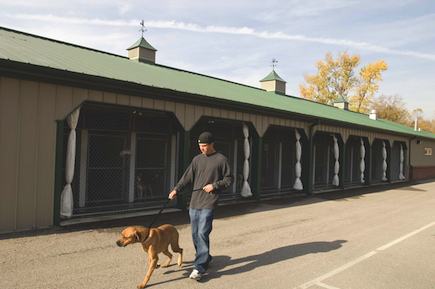This article appears in the November 2010 issue of Louisville Magazine. To subscribe, please visit loumag.com.
The Shelby County Animal Shelter altered its mission and became Kentucky’s first no-kill facility about two years ago. That means no adoptable animals — including those that are sick or injured but can be saved — are euthanized, even if the facility is operating at capacity. The focus is on spaying and neutering, finding adopters and transferring animals to rescue groups. According to the no-kill movement’s national founder, Nathan Winograd, a successful no-kill shelter saves at least 90 percent of all animals, and the other 10 percent fall into the categories of “hopelessly ill, hopelessly injured and truly vicious.”
From January through mid-October 2010, the shelter brought in 1,347 dogs and cats and put down 85 of them, about 6 percent. By comparison, Louisville’s Metro Animal Services took in 11,083 dogs and cats from January through September 2010 and euthanized 6,399, roughly 58 percent.
James Collins is a senior animal-control officer in Shelby County, and he says the biggest challenge is “making animals adoptable that are not normally adoptable,” calling it a “non-stop process finding places for these animals.” He spends much of his time on the computer, searching for homes for dogs and cats in northeastern states, where stricter spay and neuter laws have historically resulted in fewer strays than we see here. In all, the Shelby County shelter has formed relationships with some 300 animal-rescue groups, and it works closely with the Shelby County No Kill Mission, which raises money for surgeries. A volunteer coordinates animal transfers.
“I know it’s challenging. They’ve been on the brink of having to give up that no-kill status,” says Jessica Reid, who’s leading a no-kill push in Jefferson County. “Once Louisville becomes no-kill, other counties will benefit and you can start working in the rural areas. I’d love for Kentucky to become the first no-kill state.”
Is becoming a no-kill community realistic in Louisville? “I think so,” Collins says, “but it’s going to be harder because of the number of animals Jefferson County brings in compared to what we see.” He says that the volume of animals in Louisville could mean that it will take longer to reduce euthanasia rates. “You can’t just give it a try. It takes dedication,” Collins says. “You need your rescue groups and volunteers to strive to become a no-kill community. It needs to be a collective mind-set.”
Photo: John Nation


